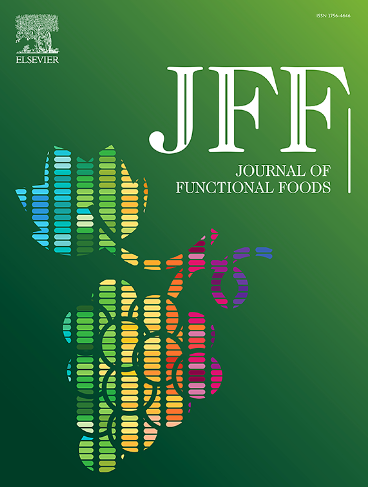Dietary fibre and weaning age influence morphology, mucin distribution, and immunological traits in the porcine colon
IF 4
2区 农林科学
Q2 FOOD SCIENCE & TECHNOLOGY
引用次数: 0
Abstract
This study investigated the effects of dietary fibre type, particle size, and weaning age on colonic morphology, mucin distribution, and immune function in piglets. Ninety-four piglets were assigned to groups based on weaning age (28 ± 2 days, conventional weaning, CW; 42 ± 2 days, late weaning, LW) and fed diets with hay or sugar beet pulp (SBP, fine or coarse particles). After two weeks, tissue samples were collected. SBP enhanced the expression of IL-10 (P = 0.001) and GPR43 mRNA (P = 0.029), while it enhanced mucin presence in LW piglets (P < 0.01). In LW piglets, coarse particles increased crypt area (P = 0.012), and fine particles increased immune cell infiltration. Weaning age also affected crypt morphology and goblet cell numbers, with LW piglets showing deeper crypts (P < 0.001). Results suggest that fibre type, particle size, and weaning age significantly influence gut health and immunity.

饲粮纤维和断奶日龄影响猪结肠形态、粘蛋白分布和免疫特性
本试验研究了饲粮纤维类型、颗粒大小和断奶日龄对仔猪结肠形态、粘蛋白分布和免疫功能的影响。94头仔猪按断奶日龄(28±2 d,常规断奶,连续断奶;42±2 d,断奶后期,LW),饲喂干草或甜菜粕(SBP,细颗粒或粗颗粒)的饲粮。两周后,收集组织样本。SBP提高了LW仔猪IL-10 (P = 0.001)和GPR43 mRNA的表达(P = 0.029),同时提高了粘蛋白的存在(P <;0.01)。粗颗粒增加了LW仔猪的隐窝面积(P = 0.012),细颗粒增加了免疫细胞浸润。断奶年龄也影响窝窝形态和杯状细胞数量,LW仔猪窝窝更深(P <;0.001)。结果表明,纤维类型、颗粒大小和断奶年龄显著影响肠道健康和免疫力。
本文章由计算机程序翻译,如有差异,请以英文原文为准。
求助全文
约1分钟内获得全文
求助全文
来源期刊

Journal of Functional Foods
FOOD SCIENCE & TECHNOLOGY-
CiteScore
9.60
自引率
1.80%
发文量
428
审稿时长
76 days
期刊介绍:
Journal of Functional Foods continues with the same aims and scope, editorial team, submission system and rigorous peer review. We give authors the possibility to publish their top-quality papers in a well-established leading journal in the food and nutrition fields. The Journal will keep its rigorous criteria to screen high impact research addressing relevant scientific topics and performed by sound methodologies.
The Journal of Functional Foods aims to bring together the results of fundamental and applied research into healthy foods and biologically active food ingredients.
The Journal is centered in the specific area at the boundaries among food technology, nutrition and health welcoming papers having a good interdisciplinary approach. The Journal will cover the fields of plant bioactives; dietary fibre, probiotics; functional lipids; bioactive peptides; vitamins, minerals and botanicals and other dietary supplements. Nutritional and technological aspects related to the development of functional foods and beverages are of core interest to the journal. Experimental works dealing with food digestion, bioavailability of food bioactives and on the mechanisms by which foods and their components are able to modulate physiological parameters connected with disease prevention are of particular interest as well as those dealing with personalized nutrition and nutritional needs in pathological subjects.
 求助内容:
求助内容: 应助结果提醒方式:
应助结果提醒方式:


